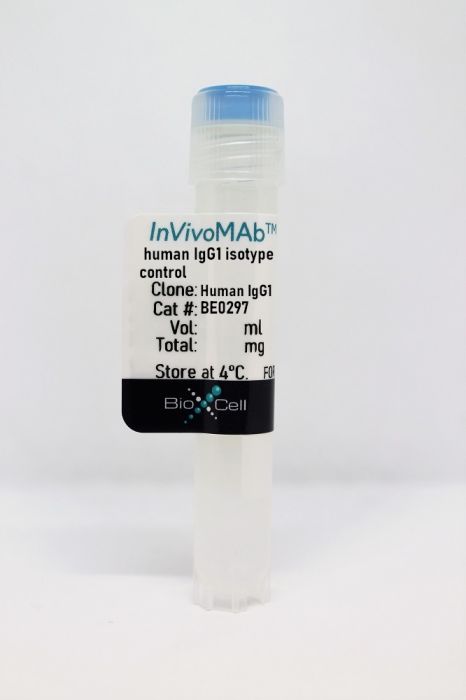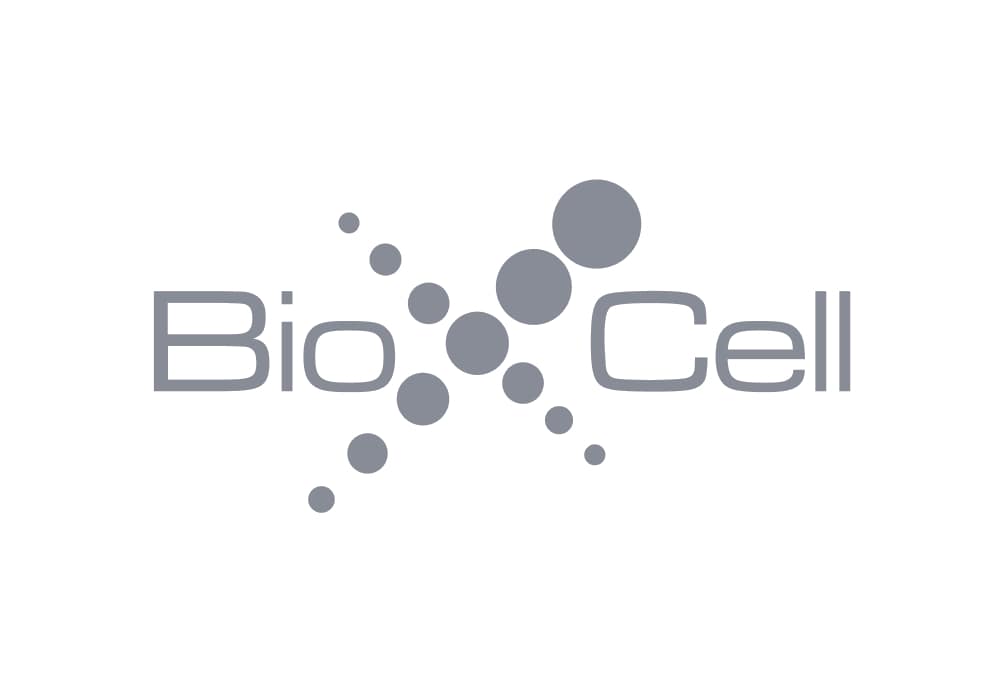InVivoMAb human IgG1 isotype control
Product Details
The human IgG1 isotype control antibody is purified from human myeloma serum and is of unknown specificity. This antibody is suitable for use as a non-targeting isotype control in various in vitro and in vivo studies. It can also be used as a negative control in various diagnostic applications such as ELISA, Western blot, immunofluorescence, immunohistochemistry, immunoprecipitation, and flow cytometry. For research use only.Specifications
| Isotype | Human IgG1, κ |
|---|---|
| Recommended Dilution Buffer | InVivoPure pH 7.0 Dilution Buffer |
| Formulation |
PBS, pH 7.0 Contains no stabilizers or preservatives |
| Endotoxin |
<2EU/mg (<0.002EU/μg) Determined by LAL gel clotting assay |
| Sterility | 0.2 µm filtration |
| Production | Purified from human myeloma serum |
| Purification | Protein A |
| RRID | AB_2687817 |
| Molecular Weight | 150 kDa |
| Storage | The antibody solution should be stored at the stock concentration at 4°C. Do not freeze. |
Additional Formats
Recommended Products
Genomic ERBB2/ERBB3 mutations promote PD-L1-mediated immune escape in gallbladder cancer: a whole-exome sequencing analysis PubMed
OBJECTIVES: Patients with gallbladder carcinoma (GBC) lack effective treatment methods largely due to the inadequacy of both molecular characterisation and potential therapeutic targets. We previously uncovered a spectrum of genomic alterations and identified recurrent mutations in the ErbB pathway in GBC. Here, we aimed to study recurrent mutations of genes and pathways in a larger cohort of patients with GBC and investigate the potential mechanisms and clinical significance of these mutations. DESIGN: We performed whole-exome sequencing (WES) in 157 patients with GBC. Functional experiments were applied in GBC cell lines to explore the oncogenic roles of ERBB2/ERBB3 hotspot mutations, their correlation with PD-L1 expression and the underlying mechanisms. ERBB inhibitors and a PD-L1 blocker were used to evaluate the anticancer activities in co-culture systems in vitro and in vivo. RESULTS: WES identified ERBB2 and ERBB3 mutations at a frequency of 7%-8% in the expanded cohort, and patients with ERBB2/ERBB3 mutations exhibited poorer prognoses. A set of in vitro and in vivo experiments revealed increased proliferation/migration on ERBB2/ERBB3 mutation. Ectopic expression of ERBB2/ERBB3 mutants upregulated PD-L1 expression in GBC cells, effectively suppressed normal T-cell-mediated cytotoxicity in vitro through activation of the PI3K/Akt signalling pathway and contributed to the growth and progression of GBC in vivo. Treatment with an ERBB2/ERBB3 inhibitor or a PD-L1 monoclonal antibody reversed these immunosuppressive effects, and combined therapy revealed promising therapeutic activities. CONCLUSIONS: ERBB2/ERBB3 mutations may serve as useful biomarkers in identifying patients who are sensitive to ERBB2/ERBB3 inhibitors and PD-L1 monoclonal antibody treatment. TRIAL REGISTRATION NUMBER: NCT02442414;Pre-results.


